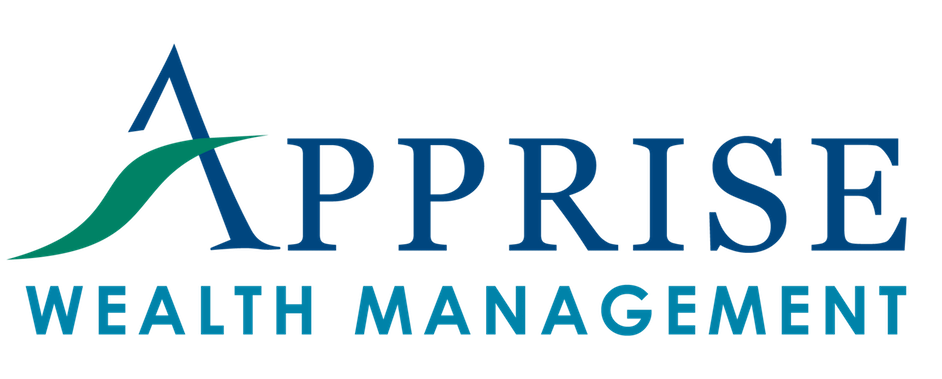For many, transitioning from work to retirement is learning to live without a steady paycheck is challenging. Unfortunately, expenses continue even after you stop working. Many of us would like to create a reliable income stream in retirement. But doing so can be tricky. The right choices can help you create a sustainable income stream for the rest of your life. The wrong ones can leave you short of cash.
When we work, we accumulate assets. We strive to receive dependable income from our employers or generate it from our businesses. We worry about how much to spend and save, what we want to spend and save our money on, and how we should invest our money.
The story changes in retirement. We stop receiving a steady paycheck. Social Security can provide a base of income. Some receive a pension. But most want or need more. The other place to turn for income is our investments. Securing consistent, dependable retirement income that meets all your needs is more challenging.
If you have been a diligent saver, you have some or all of the following account types:
· Taxable savings or brokerage
· 401k/403b/IRA/Keogh/SEP
· Roth IRA
· Health Savings Account (HSA)
If you have multiple account types, you also must decide the best way to withdraw money from them. Each account type gets treated differently for tax purposes. The tax treatment should also be considered when you decide which assets to hold in each account type – asset location).
You also don’t want to wait too long to start considering how you will generate sustainable income in retirement. Ideally, you want to start about 10 years before retirement. Starting earlier can provide additional benefits.
In many ways, managing your finances becomes more complex when you retire. Your goal: Create a retirement paycheck. Let’s look at some of the key factors to consider:
· Maximizing Social Security
· Tax efficiency
· Other sources of guaranteed income
· Set a sustainable withdrawal rate
· Required Minimum Distributions (RMDs)
· Investment Strategy
· Bucket Approach
· Logistics
SOCIAL SECURITY
Social Security often accounts for a significant percentage of a retirees’ income. You should try to maximize this benefit. Based on some of my conversations with prospects, many people still believe full retirement age (FRA) is 65. It’s not. If you were born in 1960 or later, it is 67. For those born in 1954 and earlier, it is 66. As shown in this table, it increases each year for those born from 1955 through 1959. You can start collecting Social Security benefits as early as age 62. Starting to collect benefits earlier, results in smaller monthly payments. In general, waiting until age 70 provides the largest benefit. Research shows most people are better off delaying.
Waiting until 70 is typically the optimal strategy for single people as well as the higher wage earner in a couple. Your benefit grows 8% annually from FRA until age 70. That’s a guaranteed return. If your FRA is 67, your benefit will be 30% lower if you start collecting it at 62. You are not locked into your decision. If you plan to wait and your health changes, you can start sooner.
TAX EFFICIENCY
You must pay taxes on tour income. But you should only pay your fair share. You should hold as many different account types from a tax perspective as possible. It increases your flexibility and can help lower the cost of withdrawing funds from your accounts. This blog discusses five tax-savvy retirement withdrawal strategies:
1. Withdraw proportionally.
2. Take full advantage of income subject to low (or even zero) tax rates.
3. Bracket filling.
4. Roth conversions.
5. Qualified Charitable Deductions.
Using these strategies can provide benefits for you as well as your heirs.
OTHER SOURCES OF GUARANTEED INCOME
In a perfect world, guaranteed income such as Social Security and pensions covers fixed retirement expenses. That would make it harder for stock market fluctuations to jeopardize your basic lifestyle. Those that want more certainty can consider income annuities or reverse mortgages. You should note that these products can include significant costs as well. Be careful about buying annuities from insurance salesmen. If you want to consider an annuity, I recommend working with a fee-only, fiduciary advisor. It can make annuities much less costly and complex. The same applies if you are thinking about a reverse mortgage. Make sure you get some independent advice.
SET A SUSTAINABLE WITHDRAWAL RATE
Conventional wisdom suggests using the 4% rule to determine how much to withdraw from your retirement accounts each year. This rule allows you to withdraw 4% of your portfolio for the first year. After that, you adjust your withdrawals annually to account for inflation. Historically, this approach has posed a low risk of outliving your money.
A word of caution applies. Starting at 4% may be too high in today’s low-interest-rate environment. As an alternative, you can use the IRS’ required minimum distribution rules to determine your annual withdrawal rates. The percentage you can withdraw each year increases gradually as you age. Using this rule means you shouldn’t run out of money. But it can make your income vary considerably from year-to-year. Also, retirement expenses tend to be higher when we first retire, they then decline for a few years. They are typically higher as the end-of-life approaches.
REQUIRED MINIMUM DISTRIBUTIONS (RMDs)
Taking a more strategic approach to withdrawals from traditional IRA, Roth, and taxable accounts can help you reduce your tax bill. It can lower capital gains taxes and help keep your marginal tax rate (the tax rate paid on your last dollar of taxable income) low. For example, you can make tax-free withdrawals from a Roth IRA. If you have not yet started taking RMDs, you must start taking them once you reach age 72. Failure to take your RMDs can be costly. You can pay an additional penalty of up to 50% on top of any income taxes due.
You owe taxes on your RMDs, too. You can ask the firm you work with to withhold money from your payments. You can also remit quarterly estimated payments to the IRS. Failure to make estimated payments could result in IRS penalties. If you withhold too much, you give the government an interest-free loan.
INVESTMENT STRATEGY
Portfolio Income
Interest and dividend payments from your investments can help you create a retirement paycheck. In theory, this allows you to receive consistent payouts on a monthly or quarterly basis. It also reduces the need to sell investments to raise cash.
Relying on such payments is not a foolproof solution. Many retirees cannot live on interest and dividend income alone. Today’s low-interest-rate environment makes it even harder. Plus, the stock market’s strong returns have made the dividend yield on many stocks lower.
Dividends are not guaranteed either. When the economy weakens, companies may cut or even eliminate their dividends. This happened during the 2008-09 financial crisis. It happened again – though to a lesser extent – after the pandemic hit last March.
While dividend yields have fallen, they are still often higher than interest rates. You must be careful about raising your stock allocation to increase portfolio income. It can increase risk. Low dividend yields can also cause some investors to “reach for yield.” They may invest in high-dividend stocks, real estate investment trusts, or even Master Limited Partnerships to increase portfolio income.
Reaching for yield can lower your portfolio’s total return. Why? Many higher-yielding stocks appreciate at a slower pace. This can reduce your portfolio’s longevity. Retirement can last for decades. Your investments need to last for decades, too.
Importantly, the 4% rule discussed earlier is based on total return investing and not income-only investing. You also want to be careful about which account holds your income-producing investments. It can have negative tax implications. Such investments are often best suited for IRA accounts. (If you’re not sure why, this blog on asset location may be helpful.)
Total Return Investing
Living off interest and dividends without touching asset appreciation or the original investment may work for a few retirees. But it’s unlikely to work for most people. Total return investing represents an alternative. Under this approach, your withdrawal consists of all interest, dividends, and portfolio gains. It may or may not involved using the original investment to cover any shortfall need. This approach can provide more flexibility. It can also create more income. You can use the 4% rule as a starting point for how much to withdraw.
BUCKET APPROACH
Apprise uses a form of the bucket strategy when managing retiree portfolios. This approach matches different asset types with when you need money or investment growth. It can make it easier to generate a retirement paycheck.
For the most part, Apprise takes a two-bucket strategy approach. The first bucket consists of highly liquid assets – savings accounts, checking accounts, certificates of deposit, and possibly some short-term bonds. These assets fund retirement in the near term, typically 18-24 months out. The second bucket holds a total return portfolio designed to provide long-term growth.
The 18- to 24-month “cash” balance in the first bucket should help ease fears of having to sell assets for income or current cash needs during down markets. If the market falls, you can spend your cash. When the market recovers, you replenish the cash amount by selling securities that have had the chance to recover value in conjunction with the market’s recovery. Having a process in place to provide some cushion in the event of a market downturn can reduce investment-related fear.
LOGISTICS
Regardless of your investment approach or tax strategies, you must work out the logistics of how to convert your investments into the cash that funds your retirement paychecks.
Your retirement plan should consider all the above factors. You have to decide what works best for you. Some of the suggested strategies can be used in conjunction with others.
FINAL THOUGHTS
When you retire, you may be tempted to move your money into “safe” investments such as bonds, certificates of deposit, or savings accounts. Unfortunately, these investments may lag inflation over time. This can limit the purchasing power your portfolio provides. Remember that when you retire, your time horizon can be long. The average 70-year-old lives until age 87. If you want to leave assets to your children or grandchildren, the time horizon for your investments can be even longer than that.
Conventional wisdom suggests lowering your allocation to stocks as you age. More recent research suggests that while this may be true, you should also consider increasing your allocation to equities as you move further away from retirement age. At Apprise, we believe this approach makes considerable sense.
Creating a retirement paycheck can help simplify your cash flow management. It also involves many complex issues and includes numerous moving parts. If you would like to discuss how you can create a retirement paycheck, please schedule a free call.
Our practice continues to benefit from referrals from our clients and friends. Thank you for your trust and confidence.
We hope you find the above information valuable. If you would like to talk to us about financial topics including your investments, creating a financial plan, saving for college, or saving for retirement, please complete our contact form. We will be in touch. You can also schedule a call or virtual meeting via Zoom.
Follow us:
Please note. We post information about articles we think can help you make better money-related decisions on LinkedIn and Facebook.
For firm disclosures, see here: https://apprisewealth.com/disclosures/





